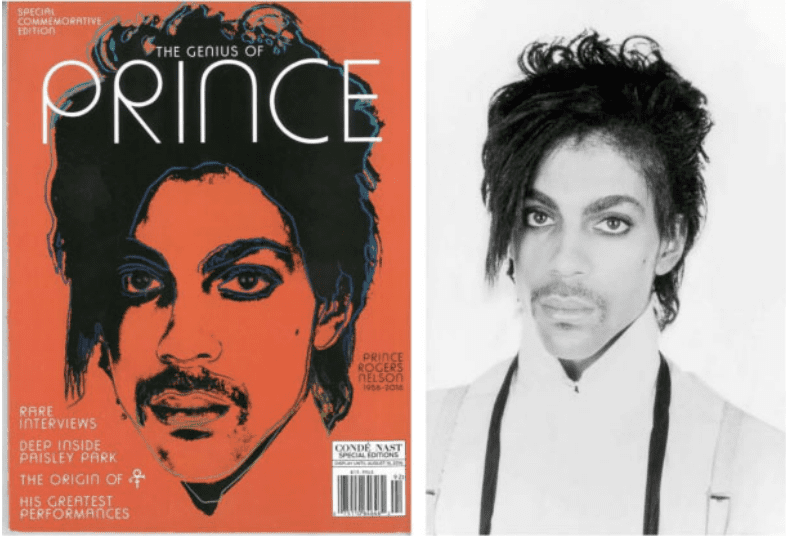Read in English / 阅读语言 ไทย
![]() 简体中文
简体中文

The judgment came out as 7-2, with Goldsmith as the winner. Despite arguments by the legal representatives of The Andy Warhol Foundation for the Visual Arts, claiming that Warhol’s screen print artwork incorporated enough transformative elements to constitute a new creative work, the court found it unconvincing and deemed that Goldsmith’s work should be protected by copyright and entitled to the benefits from the fruit of the artistic creation.
Background of the Case
The story began in 1984 when Vanity Fair magazine sought to acquire the rights to Lynn Goldsmith’s photograph of Prince taken in 1981. The purpose was for Warhol to use it as a reference for creating artwork. The magazine intended to use the image as part of an article titled “Purple Fame” (to get along with Prince’s iconic song “Purple Rain”). At that time, Goldsmith was credited in the article, and she received $400 for the use of her photograph as a reference.

Andy Warhol produced a total of 16 artworks based on the photograph, and Vanity Fair selected the ‘Purple Prince’, purple-faced image for the article. After Warhol’s death in 1987, The Andy Warhol Foundation for the Visual Arts received the ownership, and from CBS report, the foundation had sold 12 out of the 16 artworks.
Breaking Point
In 2016, Vanity Fair magazine featured another artwork, Orange Prince, by Warhol to publish as cover for a special issue, tribute to Prince. In this usage, the company paid the Andy Warhol Foundation $10,000. While, Goldsmith hasn’t got any credit contribution and payment for this usage. That lead to the saga of this legal battle.
At first, the district court ruled in favor the Andy Warhol Foundation, but the decision was reversed on the appellate court, resulting in a victory for Goldsmith. Finally, at the Supreme Court, the verdict stay the same, and Goldsmith win the case.
Drama of Verdict
This matter has drawn significant attention within the art community, especially in the era of NFTs and AI, when the issue of creating art based on other artist’s references is highly criticized. It has raised questions about the boundary of duplication, modification or adaptation. How the judgement should be land the art work on what territory? Where is the dividing line? (For example the case of parody art).
Nevertheless, regardless of the arguments, the high-profile legal battle concerning copyright infringement by the legendary artist Andy Warhol, which has been ongoing for over a half decade, has finally reached the verdict from supreme court.
Will this ruling stifle the creativity or standardize the professional practice in art industry? That’s interesting questions.
In other story than ‘Andy Warhol art violated copyright -Supreme Court rules.’ I suggested you to read this story about one of the most famous painting by Vincent Van Gogh.
Image Description: On the left side is the cover of Vanity Fair magazine in 2016 featuring the artwork “Orange Prince” by Andy Warhol. On the right side is a photograph of Prince taken by Lynn Goldsmith in 1981 (Source: Court Document).
Source: BBC (https://www.bbc.com/news/world-us-canada-65641796)